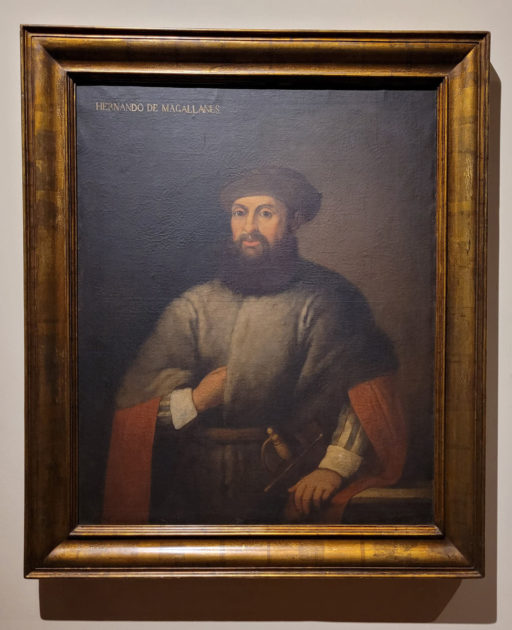When Quezon Saves Magellan and Elcano from World War II
Posted on 31 March 2021
By National Museum of the Philippines
On the occasion of the 500th anniversary of the first circumnavigation of the world, the National Museum of the Philippines brings to public view, for the first time in many years, a pair of portraits depicting the navigators Hernando de Magallanes (Ferdinand Magellan) and Juan Sebastián Elcano, who together and with their crew achieved this great feat.The two portraits can be found, starting March 31, at the Spoliarium Hall of the National Museum of Fine Arts, where they will remain for a full year.
These are the only portraits of these famous men in the Philippines originating in the Spanish colonial period, when they were considered illustrious heroes of the history of Spain in our archipelago, and are therefore priceless and highly significant to our nation’s cultural and historical heritage, both today for us in this quincentennial year and for future generations of Filipinos.

Part of a larger set that included Christopher Columbus and Hernán Cortés, these portraits were commissioned in Spain from Manila by the wealthy businesswoman and philanthropist, Doña Margarita Roxas de Ayala, in 1856 and painted in Madrid by an unknown artist. They were thought to have been copied and adapted from earlier portraits then existing in Spain.
Why Doña Margarita sought to have these portraits made and brought to the Philippines is unknown. There is no record either of where they were displayed. Much later, in 1914, her daughter, Doña Trinidad Roxas de Ayala, viuda de Zobel, donated them to the National Library of the Philippines. The National Library then was responsible for the fine arts collection that eventually was incorporated anew under the National Museum of the Philippines.
Around 1938, President Manuel L. Quezon had these portraits transferred to Malacañan Palace, the official residence and seat of the President of the Philippines, where they were hung around the upper landing of the main stairs. By this means did they fortuitously survive the war, as the Palace escaped largely unscathed in the Battle of Manila in 1945 (unlike the National Museum and National Library which were destroyed).

In the decades since, they have remained at Malacañan Palace and are presently under the care of the Presidential Museum and Library, part of the Office of the President. We are grateful to our colleagues there, led by Director Edgar Ryan Faustino, for the opportunity to borrow them for a temporary exhibition, as well as to Executive Secretary Salvador Medialdea for approving our proposal to loan and feature them to the public during this historic anniversary.
Indeed, the opportunity for people to view and appreciate these portraits has, throughout the 165 years since they were painted, been very rare, such that they are little known, even to historians here and abroad.
We hope that our visitors will be able to see these portraits soon when we are allowed to reopen our museums in Manila. In the meantime, please abide by the prevailing Enhanced Community Quarantine and take care to stay safe as we continue to strive to #BeatCovid19.
References
Presidential Museum and Library, Office of the President of the Philippines.
Philippine Magazine, Vol. 26, No. 5 (October, 1929).
Catalog of Paintings, Sculptures and Historical Objects, National Library of the Philippines (1938).

